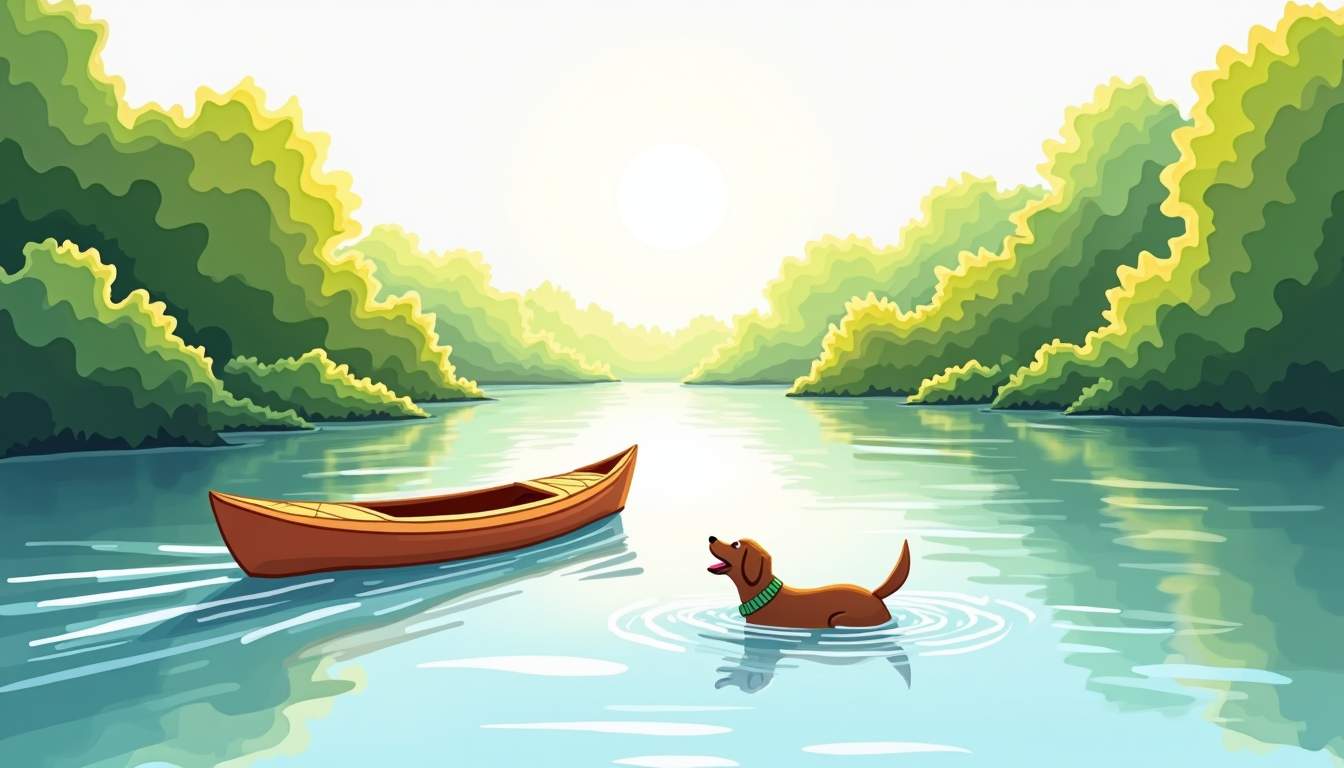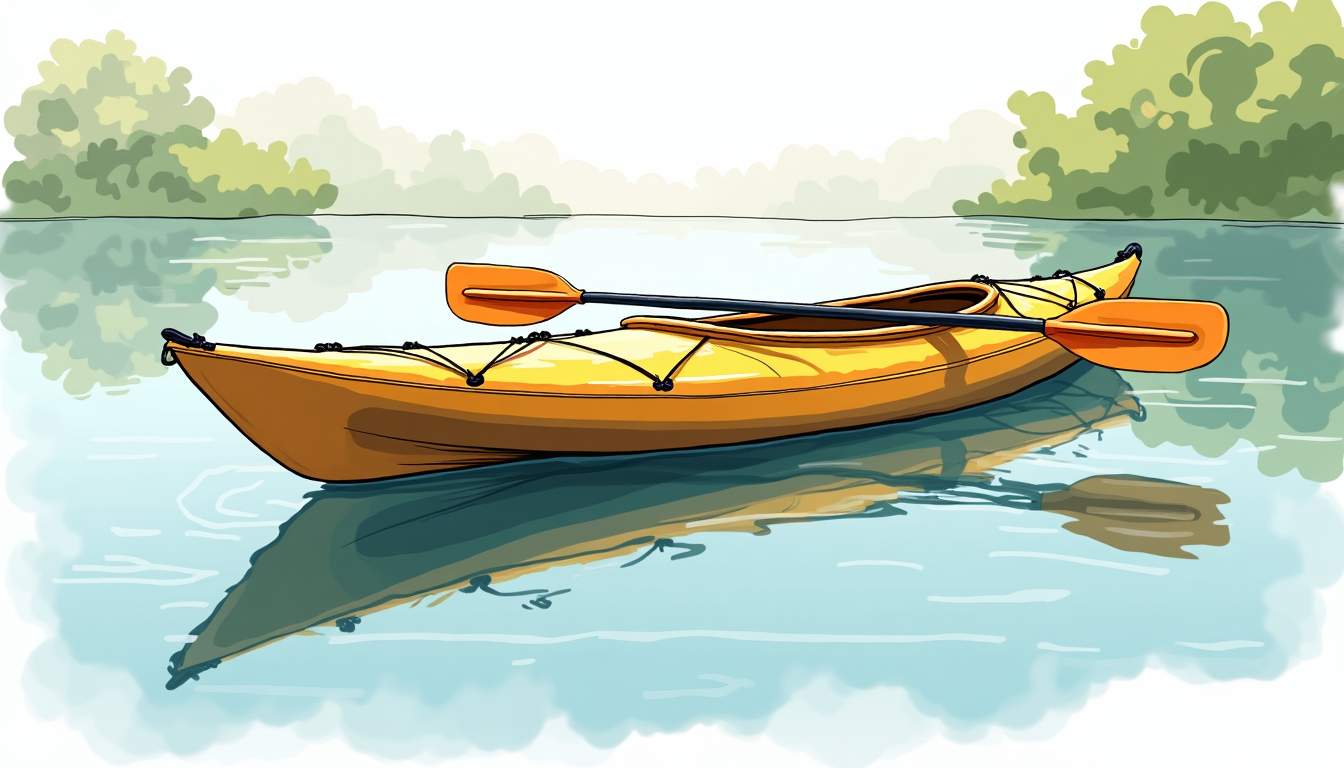
There’s a certain kind of happiness that comes from being buoyed by water, moving with a paddle, and letting the day unfold without a strict agenda. Floating and paddling—whether on a stand-up paddleboard, a canoe, or a simple inflatable—can be a powerful recipe for slow joy. This article explores why these activities work so well together, how to get started, safety and gear essentials, ways to enhance the experience, and ideas for sharing the relaxed magic with others.
Calm water has a unique effect on the mind. Gentle rocking and the sound of water create a low-stimulus environment that encourages breathing to slow and attention to settle. There’s a physiological response tied to vestibular and auditory cues: when the body senses gentle motion and rhythmic sound, the nervous system shifts toward relaxation.
Additionally, paddling adds an element of purpose and light exertion. The combination of effortless floating and rhythmic movement engages the body in a low-impact way that releases endorphins without producing fatigue. That balance—effort and ease—often translates into a contented, sustained smile rather than a fleeting thrill.
Beyond the immediate sensations, the sensory experience of water engages multiple pathways in the brain. The coolness of the water against the skin, the sight of sunlight dancing on the surface, and the occasional splash all contribute to an immersive environment that heightens awareness in a soothing way. This multisensory engagement fosters mindfulness, encouraging paddlers and floaters alike to be fully present in the moment.
Moreover, the predictable rhythm of paddling mirrors the cadence of many meditative practices, reinforcing a state of calm focus. This symmetry between movement and breath can deepen the positive emotional response, making the experience both physically and mentally rejuvenating.
Being on the water is inherently social. Conversations feel easier when the environment is relaxed and distractions are minimal. Shared silence can be as meaningful as shared laughter. Whether paddling alongside a friend or arranging a small group outing, the water becomes a communal space where relationships get a gentle boost.
Shared experiences on the water also foster a unique sense of connection rooted in the environment itself. Coordinating strokes or moving in harmony with others creates subtle bonds, reinforcing trust and cooperation. This social synchronization not only elevates mood but strengthens interpersonal ties, making each outing more memorable.
Time outdoors restores attention and reduces stress. Water settings amplify this effect: reflections, light patterns, and the subtle textures of waves or ripples provide ongoing, pleasant stimuli that draw the mind away from repetitive worries. The result is a clearer head and a more open mood, the kind that naturally produces smiles.
In addition, exposure to natural elements like water has been linked to decreases in cortisol, the body’s primary stress hormone. These physiological changes help explain why people often report feeling refreshed and rejuvenated after time spent with nature. The rhythmic sounds of water, combined with fresh air and natural light, create a multisensory experience that supports holistic well-being beyond mere relaxation.
Selecting the appropriate craft sets the tone for success. Stand-up paddleboards (SUPs) offer versatility—good for exploration, yoga, and light workouts—while kayaks and canoes provide stability and storage for longer trips. Inflatable options have improved dramatically and are often the most convenient for storage and travel.

When choosing a paddle, length and weight matter. A paddle that’s too short forces stooping; too long causes unwieldy strokes. Lightweight paddles reduce shoulder fatigue, especially on longer outings, and adjustable paddles are ideal for sharing among people of different heights.
Inflatable boards are forgiving, portable, and typically more affordable. They’re perfect for beginners and those who want a hassle-free setup. Hardboards offer improved glide and responsiveness for experienced paddlers, and they feel firmer underfoot—preferred for yoga or racing. The right choice depends on goals: ease and convenience, or performance and feel.
Life jackets or personal flotation devices (PFDs) are non-negotiable. Even calm waters can change quickly, and a PFD increases confidence and safety. Check local regulations for specific requirements, and always carry a whistle or signaling device. A leash for a SUP is recommended to keep the board close if a fall occurs, especially in windy or wavy conditions.
Simple technique adjustments make floating and paddling smoother and more enjoyable. On a paddleboard, stand with feet parallel and shoulder-width apart, knees slightly bent, and eyes looking toward the horizon. This stance enhances balance and reduces neck and back strain. Paddle from the torso rather than the arms to conserve energy and maintain steady forward motion.
For kayak or canoe paddlers, a relaxed grip and smooth, full-body strokes are key. Avoid gripping the paddle too tightly; instead, use a light, secure hold that allows wrists to rotate. Efficient strokes involve the core and torso, not just the arms, which prevents early fatigue and creates a rhythm that feels almost meditative.
Learning a few basic maneuvers increases confidence. The reverse stroke slows or stops a board or kayak, while sweep strokes help turn efficiently. Practicing these moves close to shore in calm conditions makes them second nature when venturing farther out. Knowing how to reboard from the water is also essential for solo paddlers.
Plan for gentle pacing and planned pauses. Paddle for twenty to forty minutes, then anchor or drift for a rest and a snack. Time on the water shouldn’t be a marathon; shorter, repeated sessions often produce more enjoyment than pushing for distance at the expense of comfort.
Comfort elevates the smile. A compact, dry-bag with a lightweight snack, a reusable water bottle, sunscreen, and sunglasses can make the experience smoother. Consider a small, inflatable seat for long hours on an SUP or sit-on-top kayak. Waterproof phone pouches and map cases keep essentials safe and accessible.
For those who enjoy lingering, a portable anchor lets the board or boat drift in place while keeping the group together. A lightweight, foldable camp chair carried on a canoe or larger kayak turns brief beach stops into pleasant lounging sessions. Little touches like a soft cushion for the knees during yoga or a small picnic kit transform ordinary outings into miniature celebrations.
Some prefer the natural soundtrack of water and wind, but a small waterproof speaker can add a curated vibe—gentle acoustic tracks or instrumental playlists work well. Podcasts or guided meditations can be enjoyable for solo paddles, turning time on the water into a personal retreat. Keep volume moderate to stay aware of surroundings and respect fellow water users.
Quick-drying fabrics and layers are ideal. A lightweight long-sleeve shirt and a wide-brim hat provide sun protection while remaining breathable. Water shoes with a good grip protect feet on rocky shores or during re-boarding. Sunscreen and lip balm with SPF complete the essentials; reapply after long swims or extended exposure.
Every region has hidden waterways waiting to be explored. Calm lakes and sheltered bays are excellent for beginners, offering predictable conditions and easy access. Rivers provide a variety of scenery and can range from placid stretches to lively rapids—choosing the right section for skill level is vital. Coastal paddling reveals tide lines, rock gardens, and marine life but requires attention to wind, currents, and boat traffic.

Urban waterways offer a different kind of charm. City rivers and harbors provide unique views of skylines and bridges, and often feature rental docks and guided tours. National parks and reserves offer serenity and a close relationship with wildlife, where paddling becomes an opportunity for quiet observation rather than quick exercise.
Early morning offers calm winds, softer light, and fewer people. Sunset paddles bring warmer colors and a contemplative mood. Seasonal considerations matter: spring melt can raise river levels and increase currents, while late summer brings steady temperatures and more crowded waterways. Plan according to comfort level and desired atmosphere.
Leave no trace principles apply on water as well as land. Pack out trash, avoid disturbing shoreline vegetation, and observe wildlife from a respectful distance. Avoid disembarking in fragile habitats, and clean gear between waterways to prevent invasive species transport. Small actions protect the places that make floating and paddling so enjoyable.
Paddling with friends or family turns simple outings into memorable gatherings. Noncompetitive group paddles, themed sunset tours, or picnics on secluded beaches are easy to organize and inclusive for varying skill levels. When planning, choose a route with multiple exit points and set simple communication signals so everyone stays connected.
For community engagement, local clubs and rental shops often host beginner clinics and social paddles. These events are great for meeting people, learning from experienced paddlers, and discovering new local routes. Group size should be managed for safety and enjoyment; smaller is often better for tranquil outings.
Introducing children to water sports should emphasize fun and safety. Use stable platforms, wear PFDs at all times, and keep trips short. Games, nature scavenger hunts, and simple skill-building activities keep young paddlers engaged while building confidence. Celebrate small achievements—first paddle strokes, a safe reboarding, or spotting wildlife—and let curiosity lead.
Water-based photos capture light and motion in a special way. Use waterproof cases or action cameras mounted securely for hands-free shots. Candid images of laughter, sunlit ripples, and shared snacks tell the story better than posed portraits. A printed photo or short video clip from a paddling day becomes a tangible reminder of the calm and connection felt on the water.
Floating and paddling are simple activities with outsized benefits. They combine physical ease, social connection, and nature’s restorative power into a single experience that reliably lifts mood. The path to getting there is straightforward: choose comfortable gear, practice gentle technique, respect the environment, and savor the pace.

Whether embarking on a solitary sunrise glide, a family picnic on a quiet shore, or a laughter-filled group paddle, the formula remains the same. Float when tired, paddle when curious, and smile because the moment is exactly what it needs to be—calm, engaged, and bright.
Embrace the joy of floating, paddling, and smiling every day by making Tennessee National your home. Nestled in stunning Tennessee landscapes, our luxury gated community offers serene waterfronts perfect for your next paddle adventure, alongside premier amenities like a Greg Norman Signature Golf Course and private marina. Whether you seek a move-in ready residence or a custom build, Tennessee National invites you to experience resort-style living where nature and community come together. Schedule a Private Tour today and start creating your own moments of calm and connection.